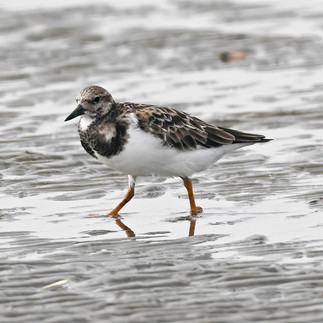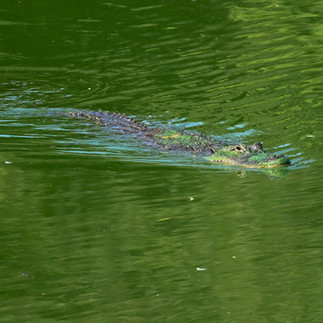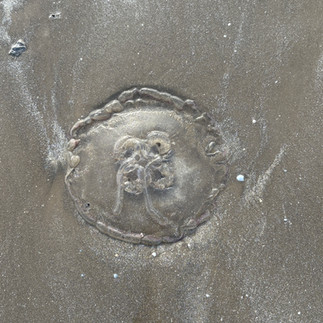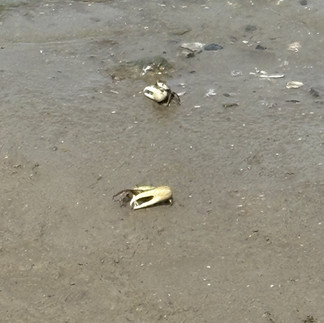Girls' Birding Trip to Galveston
- Vicki Wilmarth
- Sep 26
- 5 min read

What happens when you take six women birders from Amarillo, fly them to Galveston for fall bird migration and put them in a fabulous AirBnB for five nights? Lots of lifers and laughs. Oh, and lots of humidity and mosquitoes.

One of the best things that has occurred since several other birders and I started teaching a continuing education class on birding at Amarillo College in the spring of 2023 is the opportunity I have had to develop close friendships quickly with many women I didn't know until I became a birder. Five of those wonderful women--Andrea Gerig, Anette Carlisle, Holly Key, Rachel McKenna and Peggy Trosper--agreed to go with me to Galveston to bird pretty intensly for five days in September. The upper Texas Gulf Coast attracts a lot of migrant songbirds and shorebirds that we wanted to see. And we weren't disappointed. Even Peggy, who has been birding for 40 years, got a lifer or two.


There were some areas that were not as prolific as we hoped in mid-September, both because of heat and severe drought. Boy Scout Woods on High Island and Lafitte's Cove in Galveston were dry and offered us many more mosquitoes than birds. And because of our busy schedules, we had to take this trip a bit early during fall migration. But the birds at Boliver Shorebird Sanctuary were numerous and fascinating.
One of my favorite birds is the Reddish Egret, which is the official bird of Galveston. It can be found both in the recognizable red color and in a white morph. I could spend hours watching these huge, beautiful birds hunt. As it happened, on Boliver I was able to see a White Morph Reddish Egret chasing a large school of mullet. I was thrilled when I got home and reviewed the photos to find that the fish being hunted were visible in many of the shots (click on the photos to see the fish better).

His Reddish counterpart was pretty impressive too, whether fishing or just posing.

Two new birds I got to observe on this trip were the Rails. Rails are incredibly secretive birds who you can hear but not see very often. They hide in the reeds and torment birders who know they are there because of their distinctive calls, but can't find them in the vegetation. Fortunately, I was birding with younger women who have very good eyes and were determined to actually lay those good eyes on the birds. So thanks to Holly Key's keen powers of observation, I got to add a King Rail and a Clapper Rail to my life list.


Before we left on our trip, our group of birders decided to do our homework. To better identify the birds we expected to see, each of us took a group or two of birds to become more familiar with. The homework results were a fascinating look at the minds and talents of these brilliant women. For example, Peggy, a retired schoolteacher, created for each of us an amazingly-detailed foldout chart on Shorebirds. Rachel provided us with colorful PowerPoint presentations on Raptors and Terns. I was assigned Flycatchers (ugh) and Plovers, and as a lawyer, I naturally created a table in Word that logically compared the bill colors, leg colors, behaviors, etc. of my assigned birds.

However, there were still lots of birds that gave us identification trouble. Many birds wear duller plumages in the fall than during breeding season. Also, the sheer number of birds on Boliver, for example, required discipline to focus on one bird in a group and nail the identification. Thanks to Peggy's diligence and her spotting scope, we successfully identified many of them.


Our pick of a house to rent on Galveston was even better than I hoped. Appropriately named "Egret's Nest", the newly-built house perched right on Galveston Bay at the intersection of 8-Mile Road and Sportsman Road, which is a known haven for birds. We had Oscar the Osprey greeting us every morning from a telephone pole across the street, Crested Caracaras flying right in front of the balcony, a King Rail calling from the reeds in the yard, White-tailed Kites, Roseate Spoonbills, Tri-colored Herons and many other birds posing for pictures nearby. The 5-bedroom, 5-bath house was dreamy, and we were able to kick back and watch the sunset every evening after a long day of birding.


Just before sunset is the perfect time to drive down Sportsman Road to search through the marshes for birds posing during the Golden Hour. I got many photos of birds in warm light during that drive. It was so convenient staying right there during our trip.
The Tri-colored Heron, like its cousin, the Reddish Egret, is a combination of dancer, hunter and comedian that I cannot resist photographing every time I see one. This one performed for us that evening on Sportsman Road.
One of the birds I wanted everyone to see was a Crested Caracara, a large falcon that resides in the tropical areas of Texas like Galveston. Not only did we see one, but a whole family!


As much birding as Peggy has done, she had never seen a Magnificent Frigatebird before this trip. Traveling on the ferry between Galveston and Boliver is usually a good place to spot them, but instead, one obligingly decided to repeatedly circle us while we sat on Galveston beach one afternoon.


Of course, birders are also naturalists, curious about all kinds of nature and wildlife. Whether we saw a gator, a dogfish shark, a jellyfish, hermit crabs, or a beautiful sunrise, we always stopped to observe and appreciate.
Even as much birding as we accomplished, we didn't miss out on the great seafood, taking a dip in the Gulf of Mexico, and buying out the t-shirt shop. But mostly we just enjoyed the time away, the change of scenery, and the joys of female friendship.


We all delighted in the trip so much that we are already dreaming of which birding location we should conquer next as a group, but we'll just have to find the perfect AirBnb again. We are too spoiled after this trip to rough it. We've decide to adopt Viking's motto, "Traveling the world . . . in comfort"!






























































